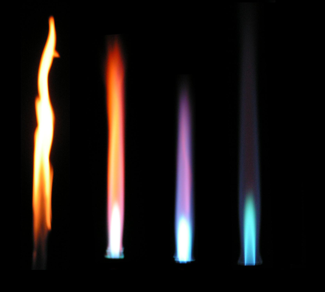An In-Depth Look at How Bottled Butane is Refined – Part I
An important and powerful natural gas derivative, butane is used to fuel tools from torches to soldering irons to camping stoves and portable heaters. It’s increasingly become an essential part of the modern world’s energy production and many around the globe rely on butane refills to power their daily energy consumption. With increased concern over the limited nature of many of our traditional energy sources, such as oil and natural gas, it’s more important than ever for the global community to take a close look at its energy consumption, uses, and the future of our planet’s energy environment. Learn more about how this fuel is produced and do your part as an informed citizen of the world to consume responsibly.
What is Butane?
Butane refers to one of two colorless, odorless structural isomers of the chemical compound C4H10. This hydrocarbon is known as n-butane, or “normal” butane, when the carbon atoms are linked in a straight chain and as isobutane, or methylpropane, when the carbon atoms are aligned in a branch formation.
How Does Butane Produce a Flame?
Butane is highly flammable and easily liquefied. When butane reacts with oxygen, it burns and distributes carbon dioxide, CO2, and water vapor into the air. When there is less oxygen in the surrounding air, carbon monoxide, CO, and plain carbon in the form of soot may also be released. In scientific terms, butane gas combustion occurs when the reactants, air and fuel, combine to form the products, carbon dioxide and water vapor, as well as heat. The process is exothermic, which means that the reaction gives off heat rather than consumes it. When flames or hot surfaces come into contact with butane, however, the gas is likely to explode.
The Butane Refinement Process: Part I
All of the best butane companies, from well-known brands such as Whip-It! butane to the smoking experts at Lucienne butane, have procedures for the long process of finding, refining, and bottling butane so that it fits your specific needs to a tee. Let’s take an in-depth look into just how butane moves from its starting point deep in the earth to butane distributors to butane canisters in your hands.
- The Formation of Butane
- Locating a Natural Gas Reserve
- Extracting Natural Gas
Butane is a natural gas derivative and a fossil fuel. Like fellow fossil fuels such as crude oil, coal, and gas, butane was formed deep inside the earth’s layers over hundreds of millions of years; in fact, most of the fossil fuel we extract today was formed before the first dinosaurs roamed the Earth. Fossil fuels are the remains of prehistoric marine animals and plants that decomposed and were covered and compressed by layers of sediment over hundreds of millions of years. While oil and natural gas are the products of marine animals and organisms that were “cooked” over time, coal was formed from the remains of plants.
Finding natural gas and petroleum reserves has become increasingly easy in the past few decades as a result of advanced technology. In the past, people waited until they saw the physical evidence of an oil reserve bubbling towards the surface to find these underground formations. Today, geologists and geophysics use advanced technology to locate reservoirs before any evidence rises to the surface. Mostly, the process involves mapping out the possible rock formations of a certain area that share characteristics with those of oil and natural gas reserves and using computer assisted exploration (CAEX) seismology, including 3-D and even 4-D seismic imaging, to find what lies beneath an area’s surface layers. After that, it’s time to drill an exploratory well and hope that you’ve struck black gold. This difficult search for resources, which are often thousands of feet underground, is an uncertain one at best and doesn’t always bear fruit.
After a natural gas reserve has been located, it’s then time to drill and set up wells. A new and very effective, albeit controversial, method involves recovering oil from shale rock by using hydraulic fracturing. This process involves drilling deep into the earth and aiming a high-pressure mixture of water, sand, and chemicals at a rock to release the gas inside, which then flows up into the well above ground. This revolutionary practice is dramatically increasing production of oil and natural gas by tapping into previously impossible-to-reach reserves. According to the government, the United States currently has enough natural gas reserves to last for at least 100 more years. Although the practice has a few concerned about its environmental effects, it has helped the United States to become more fossil fuel self-sufficient.
Read about the rest of the butane refinement process and the future of butane in Part II of this series.

